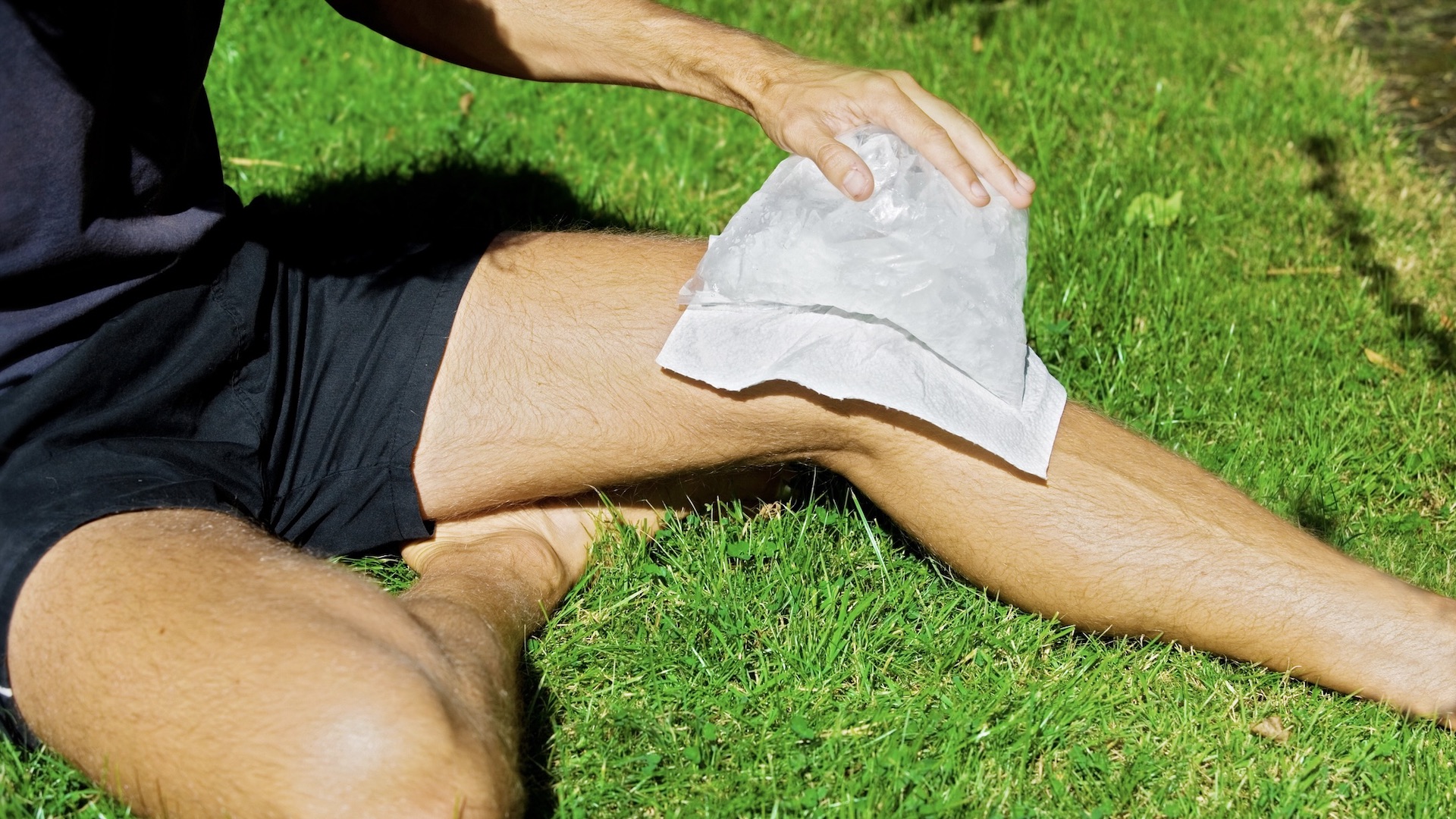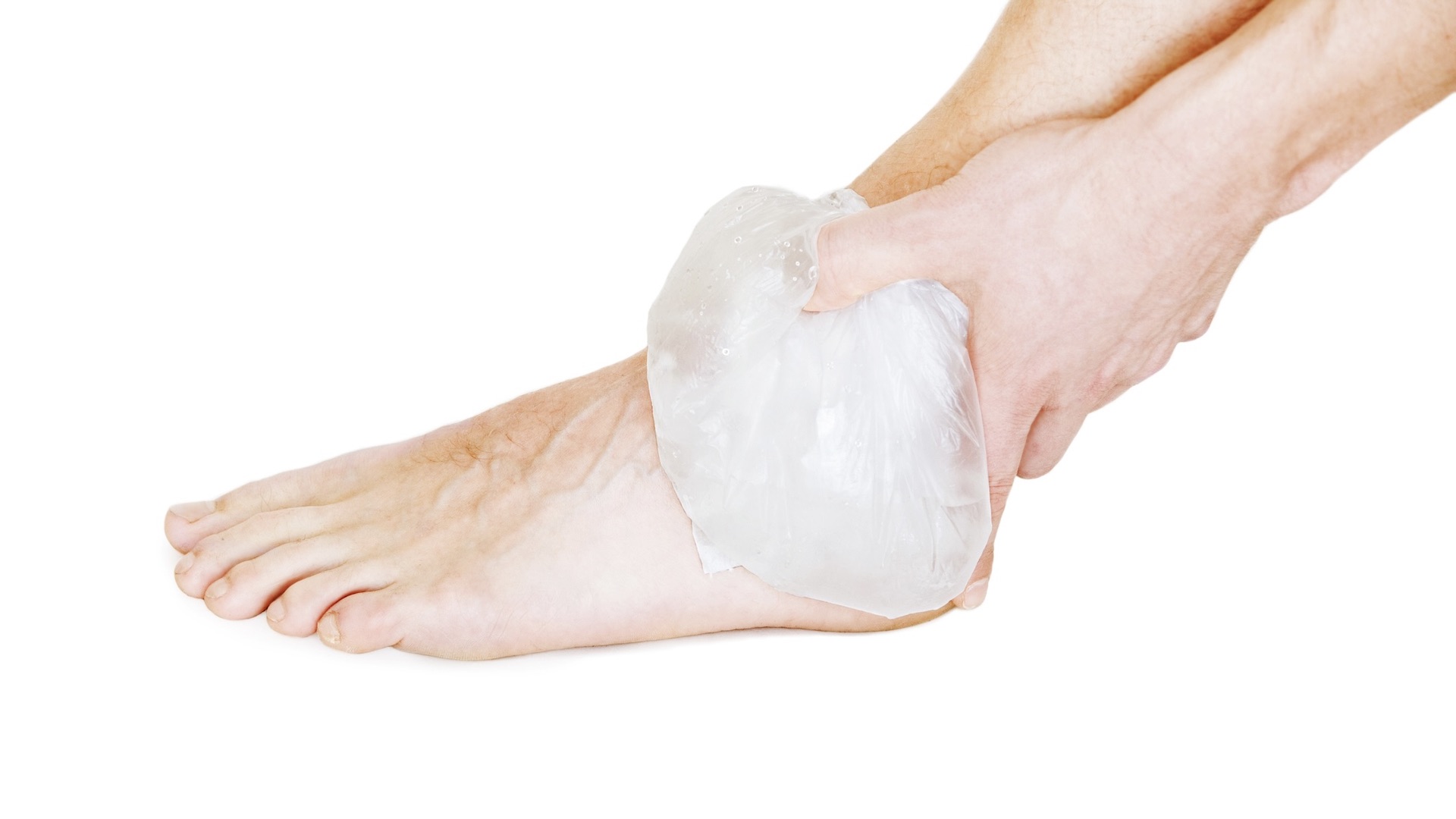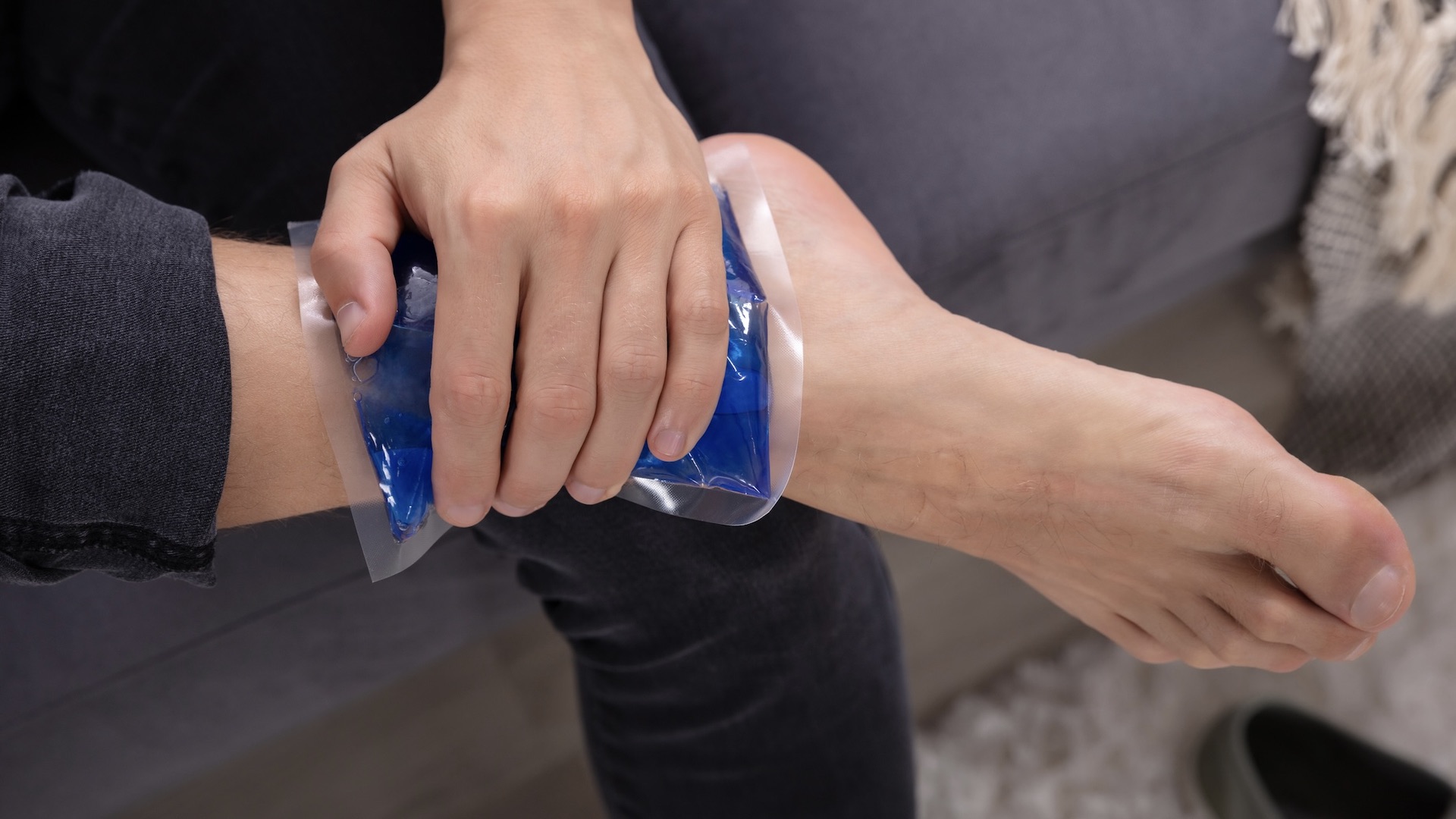Why is ice recommended for injuries – and does it actually help?
Icing has long been recommended for soft tissue injuries, but what does the scientific research say?

It has long been recommended that ice is good for injuries, but do you know why? Icing is usually recommended for injuries that cause soft tissue inflammation or swelling. It is also suggested we ice as soon as possible after an injury happens. So, if you twist your ankle, pull a muscle or bump your knee during a fall while running or hiking, the aim is to use a cold compress or ice pack as quickly as you can. Ice is also part of the treatment known as RICE (rest, ice, compression and elevation).
Icing a hiking or running injury is also known as cold therapy or cryotherapy. To explain medically, cryotherapy reduces the temperature of tissue surfaces to minimise hypoxic cell death, as well as edema accumulation.
However, a closer look at the scientific and academic evidence for the efficacy of icing for soft tissue injuries casts doubt on the treatment. We take a look at this evidence and also consider alternative treatments for injuries, such as an ankle sprain or muscle pull.

Why do we ice an injury?
Many people, including medics and sports doctors, suggest that we ice an injury for a number of reasons. Cold therapy can help to numb the pain of an injury and, it's suggested, reduce the inflammation caused by the injury. The theory goes that cold and ice on tissue inflammation constricts blood vessels and decreases circulation to the area, which can help speed up the recovery process of the damage.
If ice or a cold compress is applied quickly enough, it's suggested it should decrease the long-term swelling and potentially reduce recovery time.
How to ice an injury
It is recommended that you ice a running or hiking injury that has caused inflammation as soon as you can and for 20 minutes. You can continue to ice after a minimum 20-minute break. Some medics suggest icing every two to three hours for 20 minutes at a time.
There is no defined length of time for the icing treatment. It is usually recommended to ice as part of the RICE method of treatment.
All the latest inspiration, tips and guides to help you plan your next Advnture!
To ice an injury you can use a specialised ice pack, or you could utilise a bag of ice or frozen peas, or similar. Other suggested methods includes submersion of the affected area in cold water.
But does ice on an injury really work?
There appears to be very limited evidence to show that ice actually works to aid recovery of a soft tissue injury, such as a sprained ankle.
Indeed, a systematic review of a number of studies that assessed the use of ice in the treatment of acute soft-tissue injury concluded there was little evidence to suggest it had any significant effect, although this was restricted to treatment of hospital inpatients.
Indeed, one study concluded that traditional cold therapy may not be helpful but rather act as a barrier to recovery process because the cold reduces the blood flow and may actually hinder the injury repair. In this study, an alternative treatment, hyperbaric gaseous cryotherapy, was shown to be a better way to help with recovery. Other treatments include heat therapy, which is the opposite of cold therapy.
What seems to be emerging as a recommended method for enhanced recovery is rest and then movement, so long as there is no pain.

So what should we do for an injury?
Reading more widely, two scientific sports researchers have come up with an updated acronym for treatment, RICERR. This stands for:
Reduce load and then reload – rest from strenuous activities if the injury is painful then start to build up movement.
Ice – use ice to reduce pain but only for five minutes at a time.
Compression – wear a compression sock or Tubigrip (available for $10 from Amazon) over swollen area.
Elevation – keep your injured limb above heart height whenever possible in the first two to three days.
Referral – if the swelling and pain continues, seek medical advice, such as a physiotherapist, to rule out other more serious injuries like a fracture, ligament damage or muscle tear.
Rehabilitation – seek physiotherapist advice for a strategy to rehabilitate the injury.
In conclusion, while scientific evidence is contrary to medical advice, icing is still a popular method for soft tissue injuries, such as a sprained ankle sustained by a runner. However, it is now being suggested that movement, compression and elevation are more important for injury recovery and ice should be used in a more limited way for pain relief.
- The best first aid kits: compact emergency kits for hiking and camping

Fiona Russell is a widely published adventure journalist and blogger, better known as Fiona Outdoors. She is based in Scotland and is an all-round outdoors enthusiast with favorite activities including trail running, mountain walking, mountain biking, road cycling, triathlon and skiing (both downhill and backcountry). Aside from her own adventures, Fiona's biggest aim is to inspire others to enjoy getting outside and exploring, especially through her writing. She is also rarely seen without a running skort! Find out more at Fiona Outdoors.
